I measured mine at 110 mA relay current drain, which seems a little high to me. I threw in an extra 38 mA relay to key all that just to be safe, even though the Icom 7000 and 705 are rated for 200 mA keying current. My KX2 has no specified rating for amp keying, so it will be safer there.No, you don't need a relay buffer. Just get an RCA cable, cut one end off and wire the center pin and ground on the RCA cable to the correct pins on the radio interface. Simple!
You are using an out of date browser. It may not display this or other websites correctly.
You should upgrade or use an alternative browser.
You should upgrade or use an alternative browser.
-
You can now help support WorldwideDX when you shop on Amazon at no additional cost to you! Simply follow this Shop on Amazon link first and a portion of any purchase is sent to WorldwideDX to help with site costs.
-
A Winner has been selected for the 2025 Radioddity Cyber Monday giveaway! Click Here to see who won!
Ameritron ALS-500M HF Solid State Amplifier Review
- Thread starter Moleculo
- Start date
Will it TX on 11 meter with the 10/12 Meter board installed?I've owned the Ameritron ALS-500M with Remote Control for a few years now, so I figured it was time to write an article about it. This amplifier is for 10-160 meters and uses four Toshiba 2SC2879 transistors to provide a maximum power output of 500 watts. The 10/12 meter option is an extra $30 that you can install yourself. With the optional remote, the total package is just over $900.
The amplifier is intended for mobile installations and is expected to be used at voltage supply levels between 11 and 18 volts. Ameritron says that the unit will achieve the rated output power at 14 volts.
Before going into details about the amplifier installation and tests, I'll show a few pictures. Here is one of the amplifier face and the remote control unit:
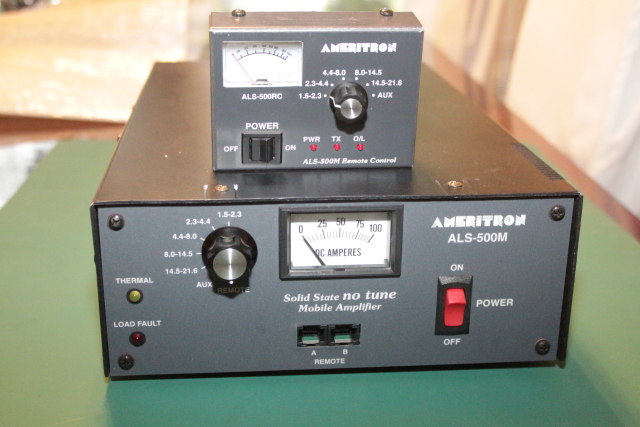
The main amp weighs only 7.5 pounds and is 3.75" high x 9" wide x 15.5" deep. The relatively small size is one of the main reasons why I chose this unit, as fitting any thing behind the seat in my small Jeep is a major concern. This fits perfect, as you will see in later pictures. The remote head is about the size of a deck of playing cards. You can see from this picture how the basic operation is performed. A band switch is used to select the proper output filter; the AUX position is used for 10/12 meter operation. If you're going to remote switch the amp, you set the dial on the amp to REMOTE and leave the power switch ON.
The THERMAL indicator is triggered if the transistors over heat and tells you that voltage for the transmit relay and bias voltage for the transistors has been removed until the temperature drops to a safe level. I've never personally witnessed this condition with my own amplifier. The LOAD FAULT indicator is triggered when band switch is in the wrong position, the antenna SWR is too high, or the amplifier is being over driven. When this happens, you simply turn the amp off and on to reset. This is basically a protection circuit to help prevent you from destroying the PA transistors.
Lastly, the ammeter indicates the current draw of the transistors collectors. I don't what this is good for except to indicate that the amplifier is working properly. If you don't see any needle movement while transmitting, it's not working. Further, I'm not sure that this meter is terribly accurate, either. Personally I think it would be more useful if this was a volt meter since I would rather know what voltage is being supplied to the amp in a mobile environment.
Here is a partial shot of the rear of the amplifier:
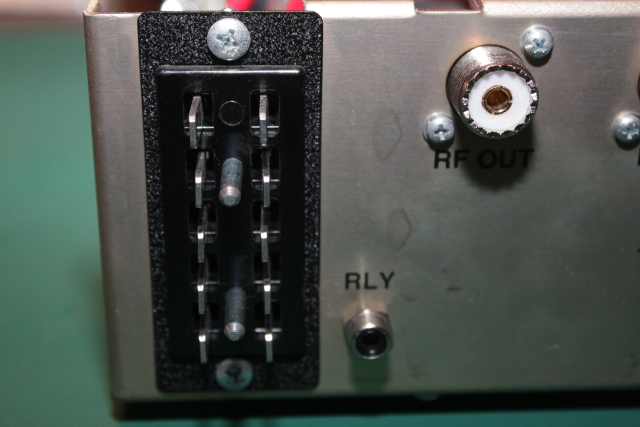
The large set of terminals on the back is the power harness. The supplied power harness has two 10 gauge positive and two 10 gauge negative wires, as well as a small positive wire that should be attached to a switched power source. This small switched wire is intended to turn the amplifier's power off when the vehicle power is off.
One of the first things I noticed when I popped the cover off is the input swamping network:
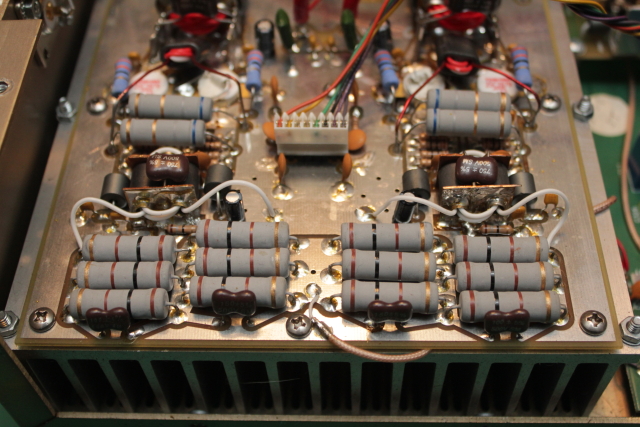
This network helps ensure that the transistors are not over driven to a point of saturation, which is important in keeping the output as linear as possible. It also helps protect the transistors from accidental overdrive which could destroy them when using AM, CW, or other carrier modes. One important point is that this swamping network will not guarantee a linear output signal; it is just a step that assists the process. If you severely overdrive the amplifier or have a non-linear signal input, this stage isn't going to clean things up for you. It's still a nice touch, though.
Here is a close-up picture of the main Power Amplification deck using the Toshiba 2SC2879 transistors:
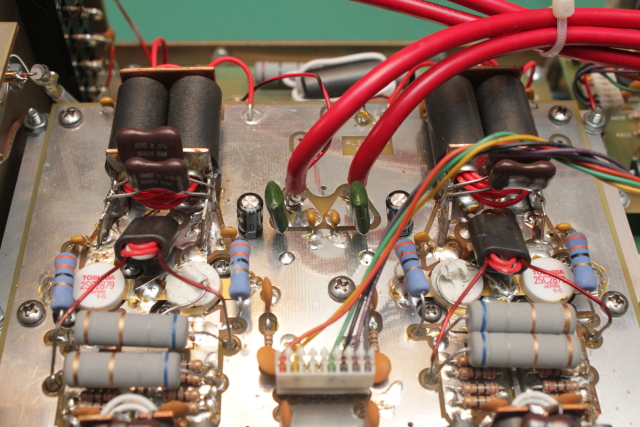
I'm nowhere close to an amplifier design expert, but I can identify a standard push-pull configuration using bipolar transistors when I see one. You'll notice that one of the transistors in each pair has a diode across them that is smothered with thermal grease:
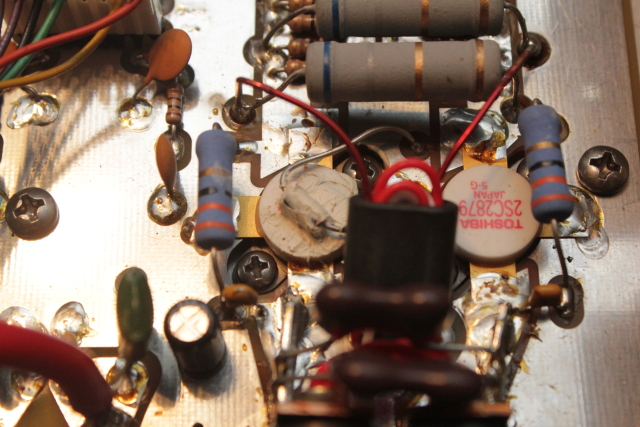
These diodes track the transistor temperature, causing a voltage change that is monitored at the bias board which not only causes it to supply an appropriate level of bias voltage to the transistors, but also triggers a Thermal Overload condition if necessary.
Speaking of the bias board, here is what it looks like:
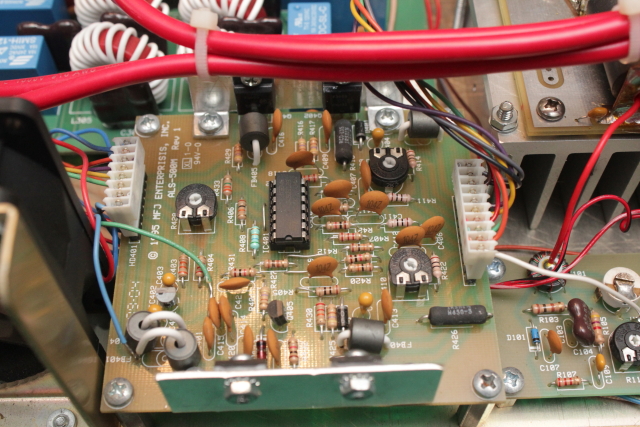
In addition to regulating bias voltage supplied to the transistors, this board also controls the cooling fan, turning it only only when necessary. It contains the components that work with a circuit on the Combiner board that detects the load SWR to trigger a LOAD FAULT if necessary. Here is a pic of the combiner board which takes the output of each PA section and "combines" them for the output stage:
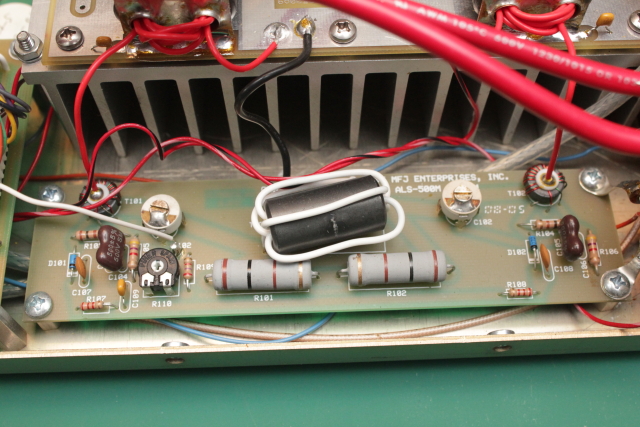
Here is another picture which shows the PA board sitting on top of the fairly large heat sink with the combiner board down in front:
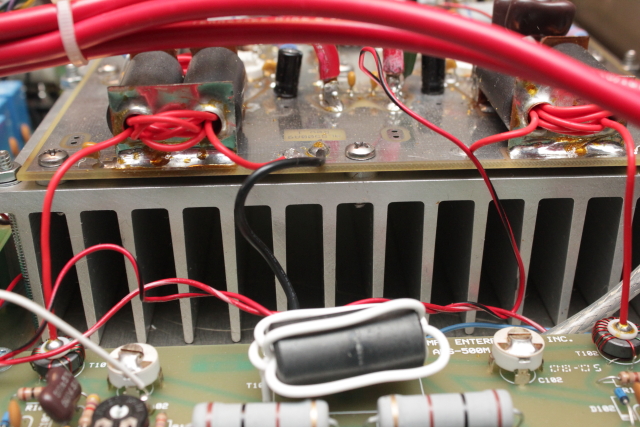
This is the exhaust fan that sits beside the bias board:
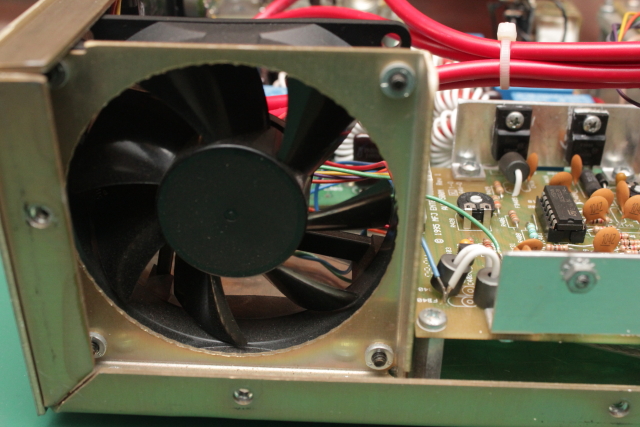
I've never experienced a situation where this amplifier ever triggered a thermal overload condition. The size of the heat sink, fan control, chassis design, and thermal tracking bias design all keep things running as they should.
The output filtering is accomplished using 5 pole filters on this board:
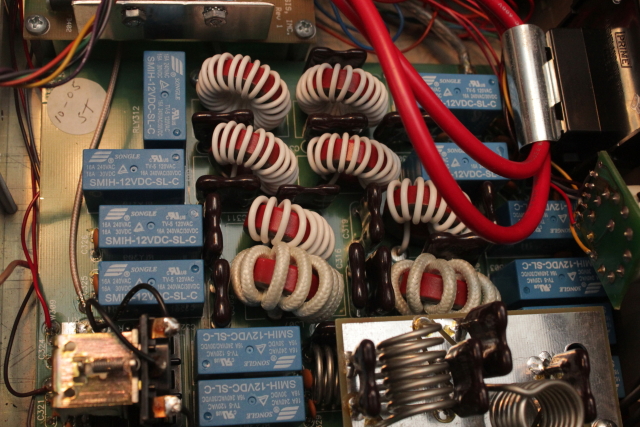
If you want to use the amp on 10/12 meters, you must purchase the MOD-10M option, which is basically just the appropriate output filter that also enables the amplifier to transmit on these frequencies. It is easily installed on supplied posts over the filter board and looks like this:
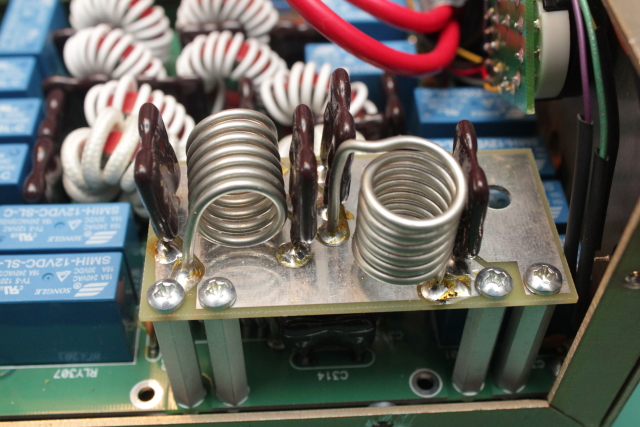
Next I'll briefly discuss my installation details and then chart my own tests on the power output capabilities of this amplifier. If you have any of your own experiences or tests of this unit, feel free to contribute.
YesWill it TX on 11 meter with the 10/12 Meter board installed?
dxChat
- No one is chatting at the moment.
-
-
-
-
@ boniface95:Hi there, I just posted this question, if anyone has time to check it out, i'd really appreciate some feedback. https://www.worldwidedx.com/threads...-radio-transmitters-in-the-same-space.270736/
-
dxBot:Kangsteri has left the room.
